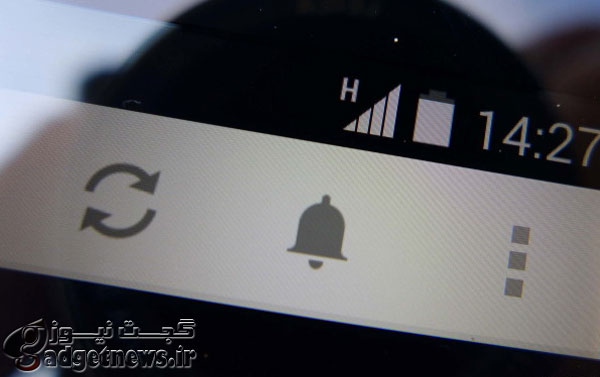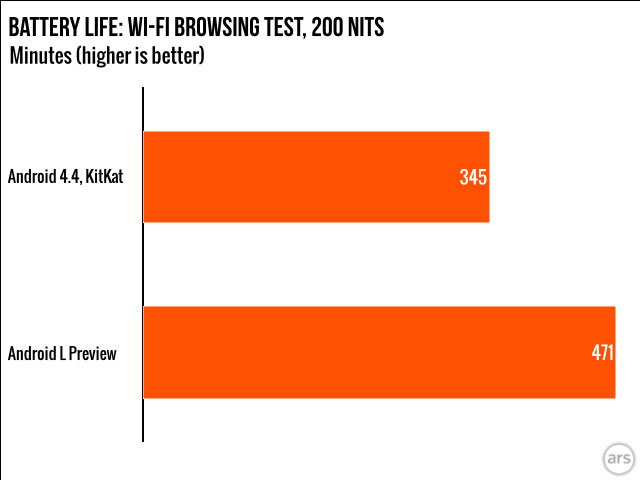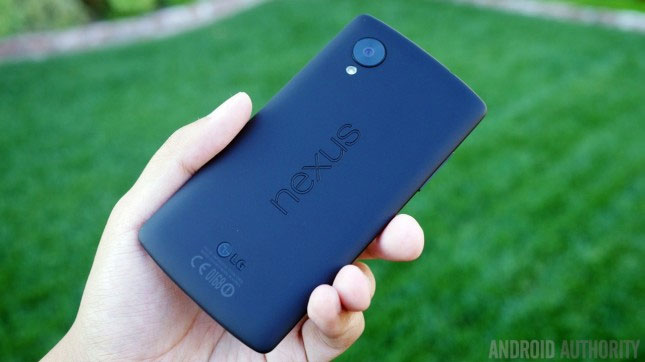
گوگل بعد از سخنرانی اصلی کنفرانس I/O و معرفی اندروید L توسعهدهندگان بسیاری را در سراسر دنیا شیفته خود کرده است. اما علاوه بر توسعهدهندگان بازار کار تست کنندهها نیز بیشتر از گذشته رونق گرفته است.
ران آمادئو از اعضای تیم Ars Technica یک تست باتری بر روی اندروید L انجام داده تا میزان دقیق ذخیره یا مصرف انرژی این سیستم عامل را با نسخه کنونی این سیستم عامل یعنی کیتکت مقایسه کند.

گوگل در اندروید L از یک سری برنامههای جدید تحت عنوان «پروژه ولتا» به منظور بهرهوری در مصرف انرژی استفاده کرده است. دو عنصر اصلی این پروژه برنامه ای به نام Battery Historian و همچنین بهره گیری از API های جدید جهت کمکردن میزان مصارف ناخواسته باتری است.

ران آمادئو برای انجام این تست بر روی تنها یک دستگاه نکسوس 5 سیستم عاملهای کیتکت و سپس اندروید L را نصب کرد تا آزمایش انجام شده با دقت هر چه بالاتر انجام شود. پس از هر نصب نیز تست اختصاصی Ars Technica اجرا میشد.
تست اختصاصی این گروه به این صورت است که در گوشی متصل به وایفای، صفحات اینترنتی هر 15 ثانیه یک بار رفرش میشود تا باتری به شکل کامل خالی شود.
نکسوس 5 در نهایت در سیستم عامل اندروید L عمری 471 دقیقه ای را تجربه کرد و در اندروید کیتکت نیز تا حداکثر 345 دقیقه خود را زنده نگه داشت؛ عدد و رقمی که میزان 36 درصد عمر بیشتر را در اندروید L نشان میدهد.
منبع : androidauthority
Android L is Google’s biggest update to its mobile operating system. We are expecting wonders when it comes to design, performance and new features, but it seems we didn’t give battery life improvements too much attention. This is probably due to us simply assuming it wouldn’t really be a huge jump, but we may have underestimated Google’s work.
Google’s “Project” tradition started with Jelly Bean and Project Butter, which made the UI incredibly smooth. KitKat offered Project Svelte, which allowed lower-end devices to run the software more efficiently. Next up is Project Volta, which is much more than a small improvement in battery efficiency.
The
test
Ars Technica’s latest tests prove the new software boosts battery life by about 36%! This is no normal battery test, either. Ars Technica went all out and was as precise as possible. Both software versions were tested with the same Nexus 5 smartphone, managing to avoid battery variations. Screen brightness was set to 200 cd/m2, which was verified by a colorimeter.
The test consists of leaving the display on and loading a website every 15 seconds (over WiFi) until the device finally gives up and dies. This was ran on Android 4.4.4 first. Android L was then flashed to the same device and the test was applied again.
What is different about Android L?
Project Volta relies on different techniques to extend battery life. For starters, the new battery-saving mode is said to add an extra 90 minutes of battery life, but this test didn’t quite rely on that.
Google discovered waking the device for a second takes away about 2 minutes of standby time. And this doesn’t necessarily involve turning the screen on, this happens every time an app wants to perform a background action and wakes the processor. The new JobScheduler API allows these tasks to be grouped together, instead of having them act individually.
It’s also important to note Android is now using ART instead of Dalvik, which is known for offering better power efficiency.
Wrap
up
This is only a glance at what Android L could offer. More apps need to be optimized to run well with Android L, meaning battery performance could get even better in the future! We are certainly more excited about Project Volta now that we have seen it in action.
 گجت نیوز آخرین اخبار تکنولوژی، علم و خودرو
گجت نیوز آخرین اخبار تکنولوژی، علم و خودرو 





